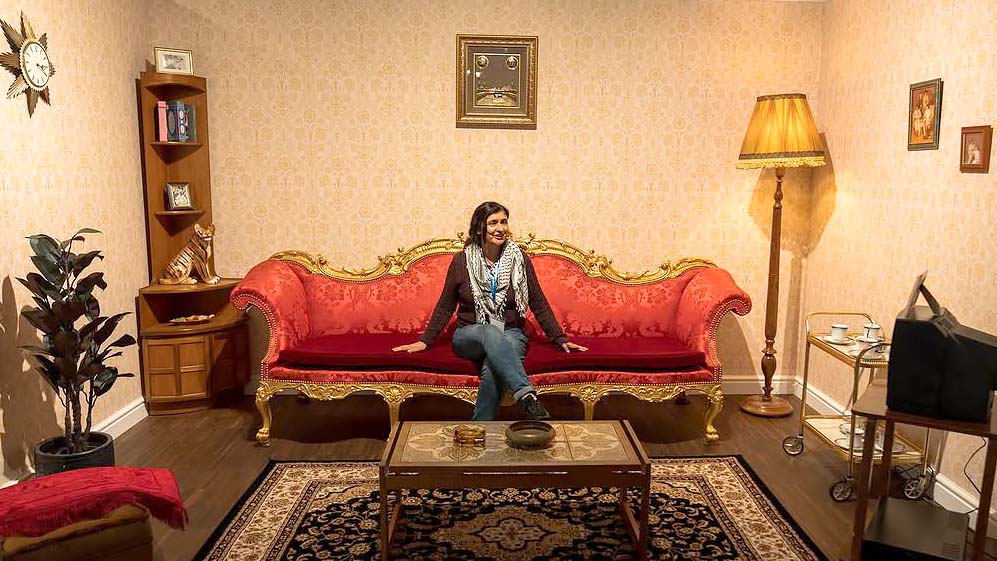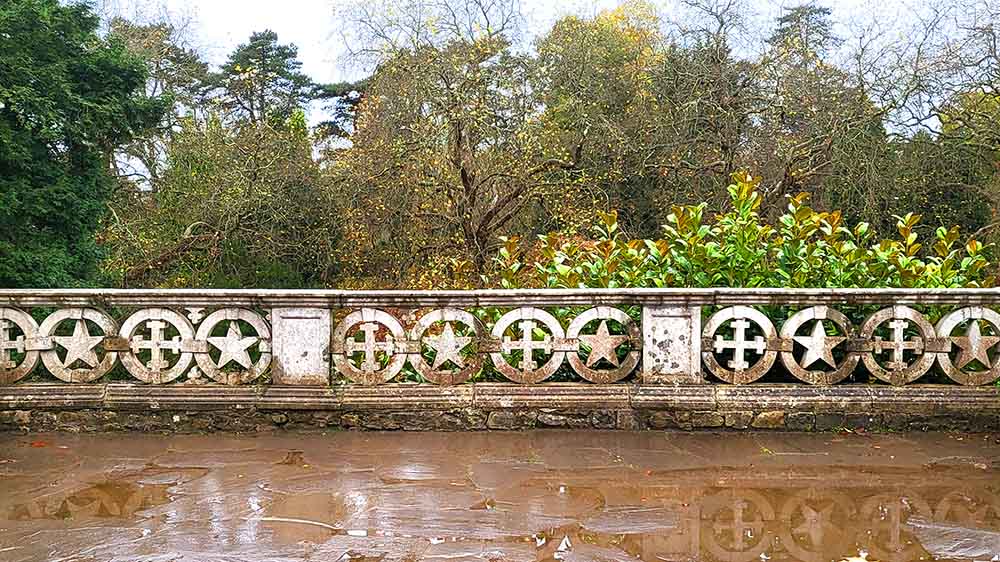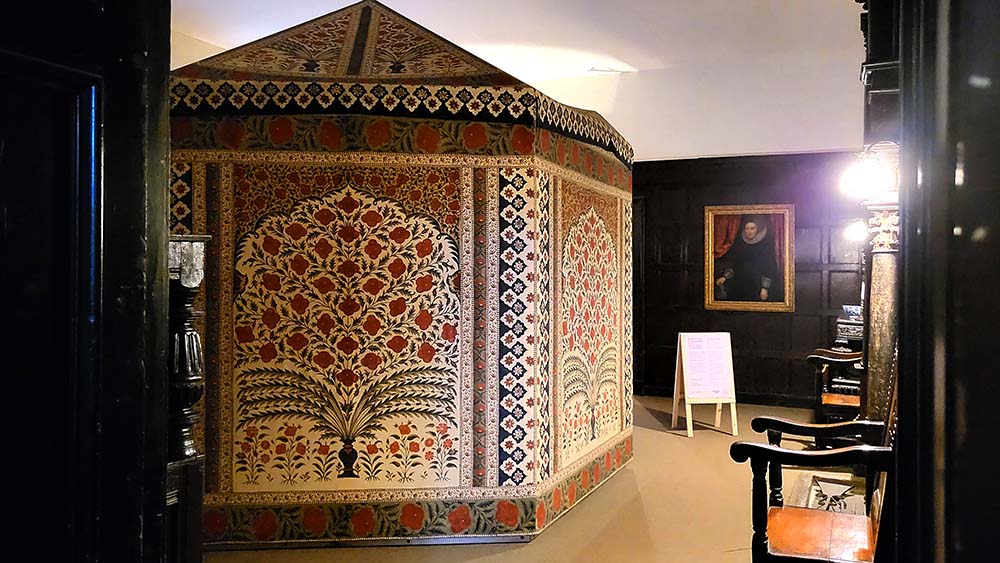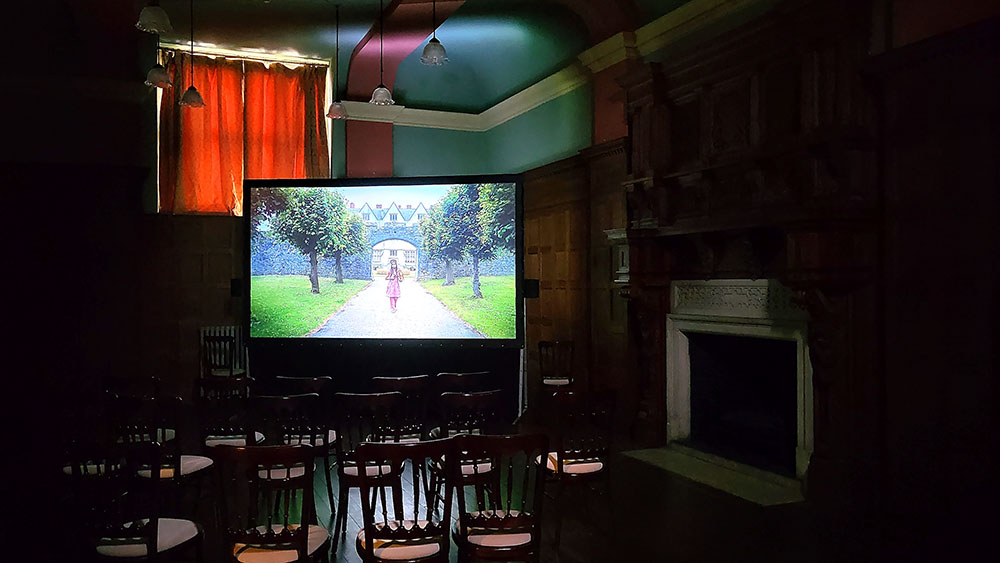The question, ‘How do we decolonise Welsh museums?’ lies at the heart of an ongoing art exhibition at St Fagans National Museum of History.

Museums in Wales need to better represent Welsh communities of South Asian descent, according to an artist exhibiting at St Fagan’s National Museum of History.
Nasia Sarwar-Skuse has created a series of art installations in collaboration with the social enterprise Ways of Working as part of a two-year programme called Perspective(s). For the artist, the installations are meant to make visitors think about how Welsh museums should tell South Asian histories.
“How do we go in and say, ‘We’re going to decolonise a museum?’” said Skuse-Sarwar. “Decolonising isn’t some grand gesture of ripping everything up. It’s about inclusivity. It’s about decentering the dominant narrative and allowing space for care and empathy in institutions.”
“It can begin by reassessing who is shown in museums and who is silenced. As a brown Muslim woman, it was obvious that I was nowhere in the artefacts. There was nothing about my heritage, even though I’m Welsh by virtue of living here.”
St Fagans is linked to a significant period in the artist’s cultural history. “I’m of Pakistani heritage,” she said. “We were colonised by the British. I grew up listening to stories from my parents about colonisation, the fight for independence from the British, and the creation of Pakistan.”
The museum is located on the grounds of St Fagans Castle, once home to the Clive-Windsor family. The Clive family built a fortune through the colonial exploits of Robert Clive, or Clive of India. He helped expand the British Empire across India, Pakistan, Bangladesh, Sri Lanka, Bhutan, the Maldives, and Myanmar and became a multimillionaire in the process.

A sofa that Clive had made for his home in London was bought at auction by Amgueddfa Cymru in 1958. The ‘Clive Sofa’, as it is now known, sits at the centre of one of the exhibits, which depicts a British South Asian living room in the ‘Wales is…’ gallery.
“The room is recreated from my memories of growing up in Britain in the late 70s and early 80s,” she said. “It’s quite typical of the sort of houses that my aunts had, we had. The tea trolley, the lamp, the family photos, the television and the rug.”
“The most poignant thing in there is the Clive Sofa. We wanted to use that sofa to recreate a living room that was a safe environment for immigrants. To place Clive’s sofa in there, and for me to sit on it and host conversations about colonialism and memory, was an important act of turning the gaze on Robert Clive.”
The artist’s second exhibit is an immersive installation inspired by the tent of Tipu Sultan, ruler of the Kingdom of Mysore. Edward Clive, the son of Robert, served as Governor of Madras in India and played a key role in the defeat and death of Tīpū Sultān in 1799.

Sarwar-Skuse’s recreation of the tent is inspired by Tipu Sultan’s dream diary, which was looted by the British when they raided his palace. “They took his dream diary from there, which was found under his pillow,” she said. “It is quite painful, really, to know the diary was looted like that”
The dream diary is currently in the British Library in London. Tipu Sultan’s tent, which was also looted, is part of the Clive Museum at Powis Castle in Wales, where many of his possessions were shipped to in the 1800s and 1900s.
“It wasn’t until I started doing my PhD that I became aware of exactly what is held in Powis Castle,” Sarwar-Skuse said. “I rocked up there, and I was quite moved, quite tearful, to see objects that are part of your heritage displayed in a way devoid of any narrative, memory, or honouring.”
“When I saw Tipu Sultan’s tent, I touched it. It was this moment of history passing from the tent to my hands. I couldn’t get it out of my mind. I remember thinking, I need to do something with this. And so, when the Perspective(s) commission came up, it was just a no-brainer to bring this story and this connection to light.”

The artist’s final exhibit is an interactive installation that invites visitors to engage with questions about colonialism by writing answers on Post-it Notes. These questions are meant to lead visitors into conversations about decolonisation, an idea and process which sits at the heart of Sarwar-Skuse’s entire project.
“Manchester Museum’s South Asian Gallery is an example of how museums can work towards decolonising their collections,” she said. “If it had been here when I was growing up, imagine what my experience of a museum would have been like. To be in a place that honours our heritage. That makes you feel seen.”
“Decolonising is a massive thing, but it can only happen step by step, and we’re just starting out. I think this is going to be multi-generational work.”
Perspective(s) is currently running at each of Amgueddfa Cymru’s seven museums, where artists from diverse ethnic backgrounds have created installations. For more information on the exhibits, visit here.
